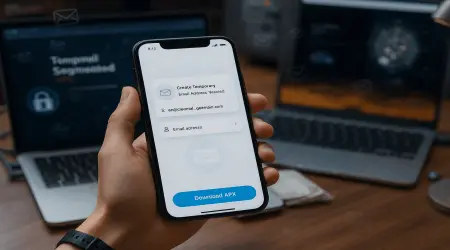

A Few Simple Rules for Professional Email Communication
In today's remote-first world, email has become the backbone of workplace communication. As more businesses embrace hybrid or work-from-home models, effective email etiquette is more essential than ever. With rising workloads and uncertainty in many industries, stress levels are high—and that increases the risk of miscommunication. This guide will walk you through a few key rules to help you stay professional, respectful, and clear when communicating by email.
Be Clear and Direct—But Not Abrupt
Unlike face-to-face interactions, emails lack tone, facial expressions, and vocal cues. As a result, short responses like "OK," "Sure," or "No" can come across as cold, dismissive, or even rude.
Instead of writing one-word answers, add a little context. For example:
- Instead of "OK," try: "Thanks, I’ll review and follow up shortly."
- Instead of "No," say: "Unfortunately, that’s not possible right now. Can we consider an alternative?"
A few extra words can prevent confusion or misinterpretation. If you’re in a rush and can’t compose a complete message, consider calling or messaging instead. This keeps the conversation flowing without creating unnecessary tension or ambiguity.
Also, consider how your message might be received by someone who is not familiar with your typical communication style. In written form, tone can easily be misread. Take a moment to put yourself in the reader’s shoes—would the message come across as respectful, informative, and complete?
Save Humor for Close Friends or Family
Workplace humor can easily be misunderstood, especially in writing. What seems like a lighthearted joke to you could come off as inappropriate or offensive to someone else. Without the benefit of body language or tone, even harmless jokes may be taken the wrong way.
Avoid venting or sharing sarcastic remarks about colleagues, clients, or departments—even if you're confident it's a private conversation. Messages can be screenshotted or forwarded, and you never know who might see them. Once trust is broken, it’s hard to regain.
Be equally cautious with forwarded emails. If you're not forwarding HR-related information or with explicit permission, avoid doing so. Unwarranted forwarding can feel like gossip or backchanneling.
Remember, every written message can be copied, saved, or forwarded. Keeping your communication professional and neutral helps you avoid potential fallout from misunderstood intentions.
Avoid Using Emojis in Work Emails
While emojis can soften a message in casual conversations, they often create confusion in a professional context. Not everyone interprets emojis the same way, and what you intend as playful might be misunderstood as unprofessional or unclear.
For example:
might mean “I’m nervous” to you—but could be read as “I’m panicking” by someone else.
In corporate settings, clarity and precision are far more valuable than attempts to lighten the mood with emojis. Emojis may work for informal chats among peers, but in emails to clients, managers, or teams, it's best to use well-chosen words.
If you’re overwhelmed with work, say:
"I’m managing a full load this week and may not meet the deadline. Can we shift it to tomorrow instead?"
Clear language is always more effective than symbols or emoticons. Communicate your intent with words, and you’re far less likely to be misunderstood.
Don’t Rely on Email Recall
Some email platforms include a "Recall Message" function, but it’s not foolproof. Often, it simply sends a second message saying you want to recall the first one—which can actually draw more attention to your original email.
Once an email is sent, assume the recipient will read it. That’s why proofreading and pausing before sending are crucial. Take a moment to review your tone, message clarity, and recipient list.
Also, remember that timing matters. Sending an emotional message in the heat of the moment can result in regret. Give yourself a moment to breathe, re-read, and reconsider before you hit send. It's always better to delay a response than to send something you wish you could take back.
In addition, double-check attachments, links, and any sensitive content. A small oversight can create bigger issues later.
Conclusion
Professional email communication is about more than just grammar. It’s about clarity, respect, and accountability. In the absence of face-to-face cues, every word counts.
Follow these simple rules:
- Write clearly and kindly, with context and intent.
- Avoid sarcasm, jokes, and emojis that may be misread.
- Be careful with forwarding and message recalls—they can backfire.
- Review, edit, and pause before sending to ensure clarity and professionalism.
In short: Proofread, pause, and be professional. These habits can help you build stronger work relationships, convey your message effectively, and avoid unnecessary conflict or confusion.

